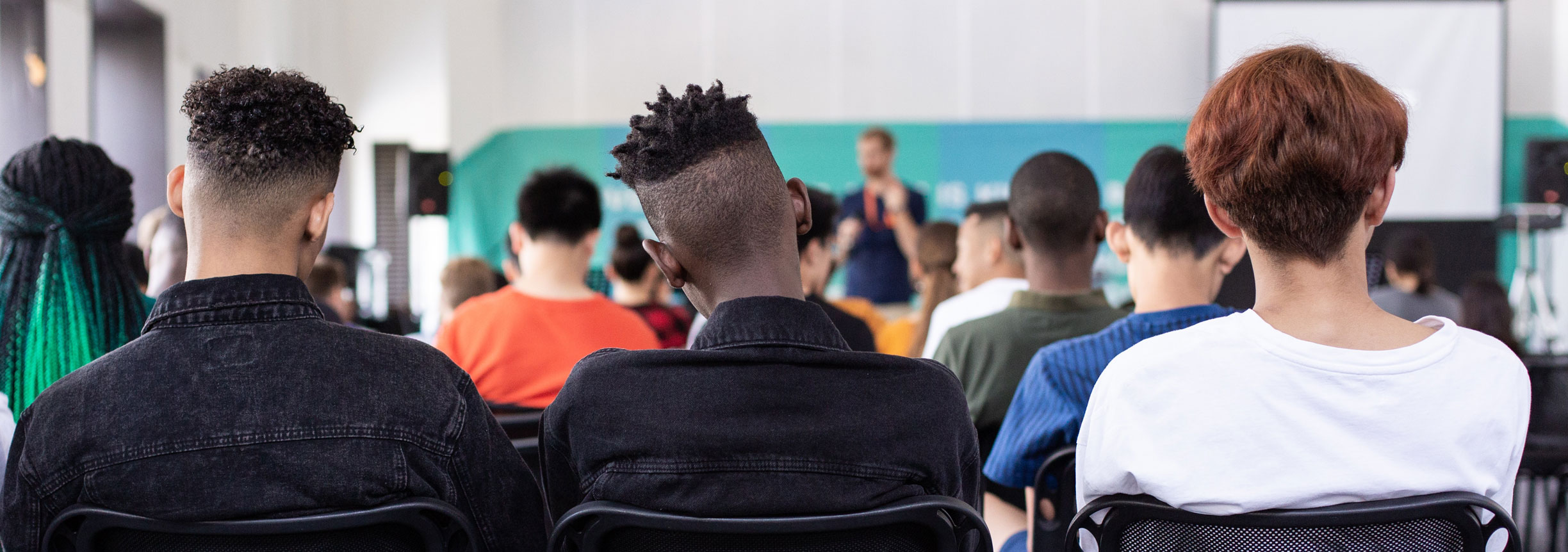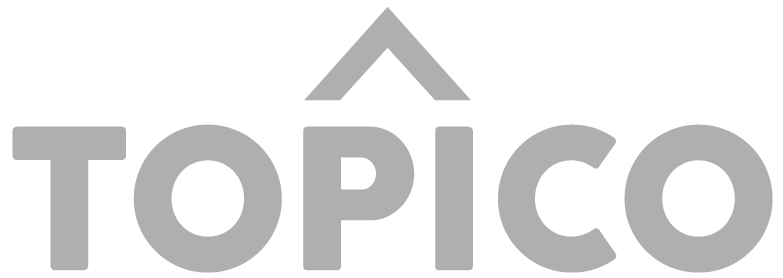Teach Your Children Well
Instilling News Literacy in the Next Generation.

Photo by Ant Rozetsky on Unsplash
Kathleen Tyner
“No matter what the source, information is only powerful if students know what to do with it. As students are inundated with media messages, the challenge is not to amass more information, but to access, organize, and evaluate useful information from a variety of print and electronic sources.”
It’s scary out there
There’s practically no end to the reasons why a parent would be hesitant to expose their child to the mature nature of online news and information.
The content can often show the world they live in to be graphic, sexual, or just sensationalized.
Likewise, the topics can be difficult to fully comprehend; politics, religion, economics, etc…
Being exposed to the news of the world is a loss of innocence, and it’s a loss that isn’t a matter of “if”, but “when.”
The intention of this article isn’t to push children into the deep end of the pool, it’s to present ways we might be able to prepare them so that they don’t have to dive in head first, but instead wade in, acclimate, and set their expectations.
So often our children are exposed to the realities of life before we have a chance to have our “serious” conversations that we would rather put them off due to myriad reasons from the uncomfortable nature of the topics to our inherent need to protect them, but in the end, we really have two choices; to educate them on our terms, or have them pushed into the deep end of the pool.
What age to start?
Again, there are so many variables that there is not a one-size-fits-all approach, but generally speaking, critical thinking skills develop and are refined over years, and they can be fostered at surprisingly young ages. However, teaching these skills in the context of news literacy can be most effective as children approach middle school, generally around ages 10 to 12.
At this age, children start becoming more aware of the world beyond their immediate surroundings and begin showing an interest in current events. Furthermore, they are often already using the internet for schoolwork and entertainment, which makes it a good time to introduce news literacy concepts.
However, the groundwork for these skills can be laid much earlier through ongoing conversations about honesty, trust, and the difference between fact and fiction which can then foster essential deductive reasoning abilities.
While the specifics would depend upon each child’s emotional and intellectual development, early adolescence is typically an excellent time to introduce the critical reasoning skills that build upon the foundation of news literacy.
Following that, as children grow into teenagers, their newly developing abstract thinking skills can be harnessed to create deeper understandings and more nuanced critiques of the media they consume.
Careful considerations
One of the more important considerations when it comes to educating children on news literacy skills are the possible negative repercussions from parents.
Parents may have differing views on what information is considered ‘correct’ or ‘accurate’. This tension could lead to disagreements between educators and parents.
Some parents may also be concerned that their children could be exposed to bias in the classroom, influencing their political or social views.
Some parents might also feel that topics related to news literacy, particularly those that touch on potentially controversial news topics, are better left to the family to discuss.
To manage these potential repercussions, teachers can consider using a balanced approach when teaching news literacy – that is, exposing students to various types of news from different perspectives and encouraging them to think critically rather than accepting any one perspective as absolute truth. They can also communicate clearly and transparently with parents about the objectives of news literacy lessons and how they align with their broader educational goals.
Margaret Mead
“Children must be taught how to think. Not what to think.”
Where to begin
It can’t be overstated enough that it’s important to introduce them to the news and to mature issues gradually and at an age-appropriate level.
Preparing children to comprehend the news and emotionally process the mature issues they encounter is both a delicate and necessary task.
Start slowly
Taking the pool analogy further, start by guiding them to dip their toe into the water, before they begin to slowly wade into the shallow end.
Start by exploring simpler, less emotionally charged news stories. This allows children to get used to the basic concepts such as who, what, where, when, why, and how – the building blocks of news literacy.
Be their guide
Talk through news stories with them. Ask them questions to gauge their understanding, and encourage them to ask their own questions. This can help them learn to think critically about the news.
Emotional awareness
Help them develop ways to express and identify their emotions about how they feel about a news event. This emotional literacy can help them deal with more mature issues they might stumble upon as they navigate the news.
Provide context
Mature topics are best introduced in age-appropriate ways. When such issues arise, explain them in simple, non-alarming terms. This enables them to handle such information without being overwhelmed by it.
Provide a safe space
After discussing a mature topic, allow them to express any worries or fears. Reassure them that it’s okay to feel these emotions and that they always have you for support and guidance.
News & media literacy
As they grow older, help them understand that not everything they read or hear may be accurate or complete. Show them how to question the source of information, and then how to verify it.
A balanced diet
Even as adults it’s human nature to be fascinated and curious when it comes to sensational headlines. Teaching children to identify so-called click-bait news from factual, reasonable stories is essential to maintaining a balanced diet. Munching on junk food is unhealthy, but we all have our guilty pleasures, and showing children how to consume a variety of news from different reputable sources is how we can teach them the importance of a balanced meal of news and media.
News literacy is a critical skill that can offer lifelong benefits, and early education plays an irreplaceable role in shaping responsible, thoughtful consumers of news.
A simple exercise
Comparing two news articles about the same event can be a valuable exercise to help a child develop critical thinking skills and news literacy.
Bias & perspectives
Different news outlets or reporters can have different perspectives that subtly or not-so-subtly color their reporting. By comparing the two articles, children can learn to identify these biases, which then helps them to:
- Identify differences in the choice of words (negative versus neutral versus positive.)
- Recognize which aspects of a story are emphasized or downplayed.
- Determine what information is included, as well as what is omitted.
Source evaluation
Sometimes, different accounts of an issue or event will rely on different sources, providing children with a way to evaluate different perspectives.
- What info does the ‘about us’ section reveal about the source, or the background of the author?
- How are they presenting the information? Is it sensationalized?
- Is it only presenting one side of the story? Are there unanswered questions?
Fact or Opinion
Comparing articles can also help distinguish between factual reporting and opinion. One article might prominently feature the journalist’s interpretation of events, while another sticks strictly to reporting the details. This can help children understand how sometimes opinions are inserted into news reporting.
Different articles may provide varying amounts of background or context. This can help children learn why understanding the broader context is essential to fully comprehend a news story.
If there are discrepancies between the two accounts, this can then encourage the child to ask why those exist and to seek out additional information or sources.
By doing these kinds of comparative exercises, children can learn to challenge the veracity of a news story, and not take it at face value. Instead, they can start to develop the skills they need to analyze, question, and understand the news media they consume more deeply and accurately.
Maya Angelou
“I did then what I knew how to do. Now that I know better. I do better.”
What is digital citizenship?
It’s important that once a child is given access to the internet they are taught that there are norms and rules for appropriate, responsible behavior in an online context.
Digital citizenship refers to the proper etiquette of the internet, and how to conduct themselves effectively and ethically while using that technology.
This encompasses a wide array of concepts, including, but not limited to:
Digital literacy
This refers to the ability to use, understand and create different forms of media, and apply these skills critically in digital contexts.
Online etiquette
Appropriate behavior, language, and manners are equally applicable in their online life as well as offline.
Online safety
Being aware of online risks and knowing best practices to protect their personal information from potential threats.
Rights and responsibilities
Our freedoms, privileges, and responsibilities that range from respecting copyright laws to standing against cyberbullying.
Health and wellness
Understanding the potential physical and psychological risks associated with technology use, such as digital eye strain or internet addiction.
Laws and regulations
Understanding how real-world laws, like those around privacy, defamation, etc., apply to our online situations.
Cyberbullying
Using digital platforms appropriately and not using them to harm others, and knowing the best ways to respond when witnessing such acts.
Digital citizenship is seen as a significant component of educational curricula globally, as it equips children and adults alike with the tools they need to engage responsibly, respectfully, and safely throughout their online experiences.
How misinformation effects children
At a young age, children are still developing skills like critical thinking and the ability to differentiate between reliable and unreliable sources.
Misinformation can often confuse them and hinder this process, inducing unfounded fear and anxiety over perceived threats that do not exist, and if children are exposed to inaccurate information, especially on social or political issues, they may form biased or prejudiced views based on this false understanding.
This can lead to poor academic performance if they use fake news or misinformation for school projects or homework, it can also then lead to inaccurate learning and poor academic performance.
Additionally, if children unknowingly share or spread fake news, they could face negative social consequences or even violate rules on the platforms they use.
To mitigate these impacts, many experts believe it’s crucial to educate children about news literacy, digital citizenship, and the responsible use of technology. This can then empower them to question information, verify sources, and think critically about the content they consume or share online.
Mark Van Doren
“The art of teaching is the art of assisting discovery.”
Curriculums
Now that the internet has been integrated into so many aspects of our everyday lives, many educators, scholars, and policymakers believe that news literacy should indeed be an integral part of the educational curriculum.
We live in a time of information overload, some of which is potentially false or misleading. This makes it essential that we equip students with the skills to differentiate between reputable and fake news and misinformation/disinformation.
Students could greatly benefit from educational curriculums around news literacy that can enhance their engagement in civic issues, promoting more active and informed participation in social and political matters.
By teaching students how to discern the reliability and credibility of different news sources, news literacy can aid in combating the spread of misinformation and disinformation. This in turn can instill the responsibility to share content only after ensuring its authenticity, thereby minimizing the spread of false information.
The challenge to what’s being presented here is to ensure that the curriculum remains impartial and non-political and continuously updates to keep pace with the rapidly evolving news/media landscape.

Claire Fagin
“Knowledge will bring you the opportunity to make a difference.”
A foundation for news literacy
We have to start somewhere, and we have to start soon.
By educating children at a young age about news and media literacy we can begin to build a foundation from which modern society can receive several long-term benefits.
News (and media) literacy education can promote critical thinking in children, and they can then begin to learn about analyzing and evaluating the information they encounter on a daily basis, and not to accept every media message at face value. This skill can even translate to better decision-making abilities throughout their lives.
Being literate in news and media can also have a positive impact on society by cultivating the masses into informed citizens who want to actively participate in our democratic processes, and having a better understanding of the influence of media and public opinion can genuinely help us make better-informed decisions about political, social, and economic issues.
And once children learn to recognize persuasion tactics, advertising methods, and potential propaganda tools they can protect themselves from manipulation by becoming more discerning consumers of media.
As a complex, modern society it is essential that we develop the skills of critical thinking, empathy, and global awareness to help us gain insight into different perspectives, cultures, and world views, and once we begin to make progress in these areas we’re then more likely to see better academic results as well.
Nelson Mandela
“Education is the most powerful weapon which you can use to change the world.”
Long-term benefits
In the long run, a news-literate population can contribute to a robust, healthier democracy. This can hopefully lead us to meaningfully engage in societal and political dialogues, making informed voting decisions, and holding the media and political leaders accountable.
And as more responsible consumers of news and information, we can participate in healthier conversations, with less cyberbullying, and more thoughtful interactions.
The question of educating our children on news literacy shouldn’t be a case of “if”, but “when”, and not “why? but “how?”, and a healthy debate on these questions is needed sooner than later.
This article isn’t written to be a rulebook. It’s meant to spark some ideas, ignite some conversation, and challenge us to find a path toward friendly consensus, and healthy solutions.
Given these myriad benefits, it becomes quite evident why our children’s education in news and media literacy is essential to form a better-informed, less divisive society.
To quote Justice Ruth Bader Ginsburg, “You can disagree without being disagreeable.”
And what a better world we would live in if we could all follow that rule.

Curating the news with Topico.
Topico is a mobile app for the user curation of news articles.
Our goal has always been to create an environment where we can comfortably share the news.
There are plenty of places to share the news, but those places also allow you to share photos, memes, and personal rants.
It’s our belief that to comfortably share the news we needed to build a platform that’s dedicated to only sharing news links, essentially Topico providing a way for people to create their own news aggregators for others to follow articles on the issues events, and topics that interest them.
User-curated news provides various perspectives and unique sources to showcase an infinite amount of personal curations.
Are humans far from perfect? – Of course, but they’re still the most capable of applying critical thinking and understanding context and nuance.
While A.I. has a place in finding relevant news and information, it’s our belief that human intelligence through personal curation is still needed to provide the general public the ability to actively participate in the sharing of knowledge and information.
Additionally, there’s an aspect of human curation that is often overlooked when discussing A.I. and algorithmic curation, and that’s the inclusion of creativity, aesthetics, and the most human of qualities, empathy.
